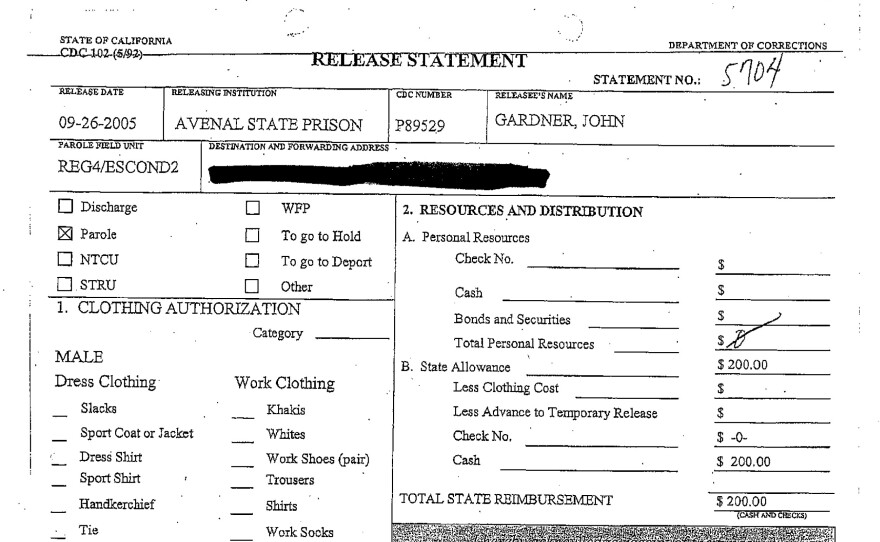A 282-page document released today by the California Department of Corrections and Rehabilitation (CDCR) contains the history of John Albert Gardner III's incarceration in the California state prison system. The document contains graphic material.
This is the first time the central file of a former inmate has ever been released, according to CDCR spokesman George Kostyrko. He said corrections waived data privacy to release the file due to great public interest. However, some information is still left out.
"The central file was redacted," said Kostyrko. "There are sections of it that are blacked out to protect the rights of the individual who was incarcerated."
John Albert Gardner III is accused of killing 17-year-old Chelsea King, who disappeared three weeks ago after going for a jog in the Rancho Bernardo Community Park.
In a letter responding to a KPBS request for public records, Oscar Hidalgo, the assistant secretary with the Office of Public and Employee Communications, stated that the CDCR does not ordinarily release the central file of any offender.
"In light of the public interest in this matter CDCR has chosen to waive certain provisions of law that would otherwise exempt these records from public disclosure," Hidalgo stated in the letter.
Gardner was incarcerated from September 14, 2000 to September 26, 2005 after being convicted for assaulting a 13-year-old girl in Rancho Bernardo.
This central file documents several prison rules violations including smoking within five feet of the entrance to a prison, smoking in a dorm area, being in possession of a butane lighter and refusing to attend work.
The CDCR redacted identifying information to protect the safety of the victim, victim's family, staff, offender's family and other people discussed in the file. KPBS chose to redact an additional name to protect that person's identity.







